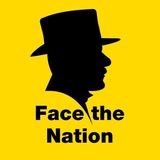Ottoman Armenians are marched to a prison in Kharpert, Armenia, by armed Turkish soldiers, April 24, 1915 @facethenation
Physicist Norris Bradbury sits next to the assembled “The Gadget”, the nuclear device created by scientists to test the world's first atomic bomb, 1945 @facethenation
On April 26, 1986, during a testing operation, one of the four reactors at the Chernobyl nuclear power plant, located 100km from Kiev in Ukraine, went out of control and exploded @facethenation
A Chernobyl liquidator pushes a baby in a carriage who was found during the cleanup of the Chernobyl nuclear accident, 1986 @facethenation
Chernobyl disaster, accident in 1986 at the Chernobyl nuclear power station in the Soviet Union, the worst disaster in the history of nuclear power generation.
The disaster shone a spotlight on lax safety standards and government secrecy in the former Soviet Union. The explosion on April 26, 1986, was not reported by Soviet authorities for three days, and then only after winds had carried the fallout across Europe and Swedish experts had gone public with their concerns.
About 600,000 people, often referred to as Chernobyl’s “liquidators,” were sent in to fight the fire at the nuclear plant and clean up the worst of its contamination. Thirty workers died either from the explosion or from acute radiation sickness within several months. The accident exposed millions in the region to dangerous levels of radiation and forced a wide-scale, permanent evacuation of hundreds of towns and villages in Ukraine and Belarus.
Nobody canceled a May Day parade in Kiev that saw thousands of people walking in columns along the streets, with songs, flowers and Soviet leaders' portraits, covered with invisible clouds of fatal radiation on May 1, 1986.
@facethenation
The disaster shone a spotlight on lax safety standards and government secrecy in the former Soviet Union. The explosion on April 26, 1986, was not reported by Soviet authorities for three days, and then only after winds had carried the fallout across Europe and Swedish experts had gone public with their concerns.
About 600,000 people, often referred to as Chernobyl’s “liquidators,” were sent in to fight the fire at the nuclear plant and clean up the worst of its contamination. Thirty workers died either from the explosion or from acute radiation sickness within several months. The accident exposed millions in the region to dangerous levels of radiation and forced a wide-scale, permanent evacuation of hundreds of towns and villages in Ukraine and Belarus.
Nobody canceled a May Day parade in Kiev that saw thousands of people walking in columns along the streets, with songs, flowers and Soviet leaders' portraits, covered with invisible clouds of fatal radiation on May 1, 1986.
@facethenation
In 1979, there were 250 serious crimes reported in the New York subway system – per week. There were six murders in the first two months alone. No other subway in the world was more crime-ridden and infamous.
New Yorker Willy Spiller braved the labyrinth transport system for a photography series that says so much about the modern tone and texture of the world's most iconic city.
@facethenation
New Yorker Willy Spiller braved the labyrinth transport system for a photography series that says so much about the modern tone and texture of the world's most iconic city.
@facethenation
A worker in the assembly plant of car maker Iran National, Tehran, 1977 @facethenation
Elvis Presley waits for his breakfast while a lady, who can't sit at a segregated lunch counter, waits for hers, 1956 @facethenation
On April 25, 1945, American and Soviet troops met at the River Elbe, marking an important step toward the end of World War II in Europe @facethenation
Last Mughal Emperor Bahadur Shah II, just after his trial in Delhi and before his departure for exile in Rangoon, 1858. He is the only Mughal emperor to be photographed @facethenation
